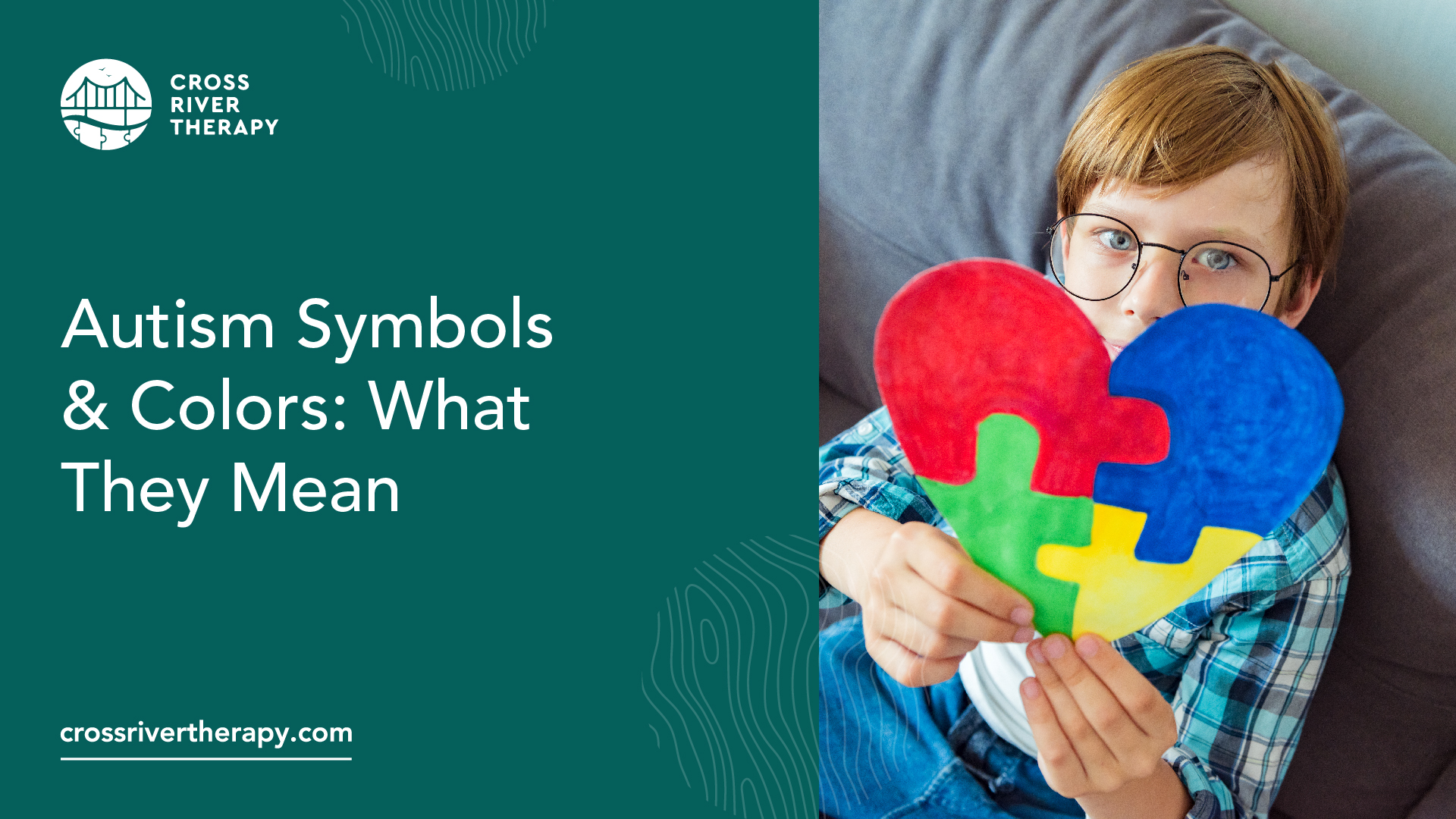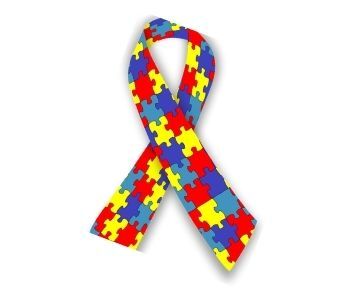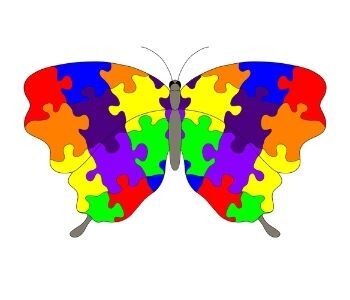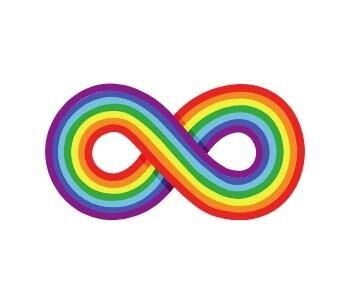Autism Symbols & Colors: What They Mean
Learn what autism symbols and colors are, the different types of colors and symbols, and what they mean.
What are autism symbols and colors?
When people think of different symbols for autism, the first thing that comes to mind could be puzzle pieces, bluish colors, and even the infinity symbol.
In some cases, a butterfly might be better recognized. The characteristics of some of these symbols are outlined below, including information about the different ways they're utilized.

However, some things should be clarified. For one, there is no official symbol for autism, though there are a couple primarily used by people with the disorder, therapists, and people closely associated with autism awareness organizations. Many autistic people associate puzzles and the color blue with the disorder.
In one survey, the color blue was picked before others.
Still, blue often comes up as a favorite color by many people, even those without autism. It's no surprise that blue would turn up as a favorite among any group. However, there is a sizable population of people with ASD that prefer symbols with multiple colors instead.
Some consider it more of an international symbol, as it's often used as such. For this reason, people recognized it whenever it's chosen for use instead of others.
Then some associate both the puzzle and infinity symbols as official pieces of sorts. However, when used as a ribbon, autism is linked more with advocacy and awareness than a symbol of the disorder on its own. This is comparable to the breast cancer awareness symbol, which uses the same bow but in pink color, with no puzzle.
As such, the bow is seen as a representation of people with autism for their uniqueness rather than its negatively-connotated symptoms.
Symbol preference is sometimes chosen by one's ability to find a reason for it, though some choose to find a connection to every symbol.
For example, someone with ASD may consider the butterfly as a representation of a positive trait in people with the disability, like their attentiveness to objects that are small, delicate, and frail. At the same time, one may find that infinity represents the intrigue that autistic people have for discovering new ways to learn about the world around them.
Depending on the city, region, state, and country, the symbol that's deemed more official can change. The puzzle may very well be a reflection of the unknown qualities of the disorder, where new things are constantly being discovered.
Some researchers speculate that it may even be an evolutionary feature that helped distinguish older human genes apart from those that all people inhabit today.
What are the types of autism symbols?
Multi-Colored Puzzle Piece Ribbon

The symbol that most people associate with autism is the multi-colored, interlocking puzzle piece. This symbol was created by 15 people, some of which had autism, and others were advocates of the disorder.
Awareness Symbol
The awareness symbol is used for lots of disorders, typically when awareness of its existence should be increased.
The shape itself, with its crescent loop that drops on the other side and crosses down, can be thought of as awareness itself. But what does inside the loop determines what the cause is for. For autism, it would be a puzzle, the blue symbol, or the rainbow.
The Rainbow Spectrum
This symbol is closely related to autism as the disorder is defined. It can be made into different colors as they exist on a rainbow, which is interpreted as a representation of the different ranges of ASD and its severities.
It's usually displayed next to or with puzzle pieces or the infinity symbol. At times, the ribbon might be used so that everyone sees one that they recognize or like over the others.
Light it Up Blue
On its own, blue often symbolizes Autism Awareness Day, which is the second of April. On this day, there will be plenty of blue ribbons and various other symbols with the color, typically in therapy centers, hospitals, and even schools.
When teachers study it in their classroom, they may use the color as an indicator to other students of the disorder that's in question.
Blue originates from an association called Autism Speaks, where they ran a campaign called Light it Up Blue to promote the color as a rallying cry for awareness. Blue is a representation of the calm that the autistic may feel as the environment around them could be more chaotic.
The Puzzle Piece
As a representation of autism, the puzzle piece was also created by the same people that produced the blue color.
Although the puzzle pieces are thought of positively, others find it slightly distasteful, where the pieces indicate a feeling of the autistic not fitting within the confines of what's acceptable and what isn't. Still, the puzzle remains an overwhelmingly positive symbol that's often used with the rainbow.
The Butterfly

The butterfly is one of the newest symbols used for autism, where it's sometimes debated as a preferred replacement for those that dislike the puzzle.
The butterfly is described as an inspiration for thoughts related to one's changing abilities, symbolizing inspiration through diversity and new ways of developing one's abilities with society at large.
The Infinity Symbol

The infinity symbol is relatively new as well, with its focus on inspiration on inclusion, remembrance, and thought of others with ASD. It's often linked with a solid blue or all the colors of the rainbow. Infinity on its own represents something incapable of ending.
When applied to autism, the treatment for the disorder, and the ability for people with it to learn new things, a continuous journey for cognitive growth is also a never-ending commitment that doesn't end with therapy.



